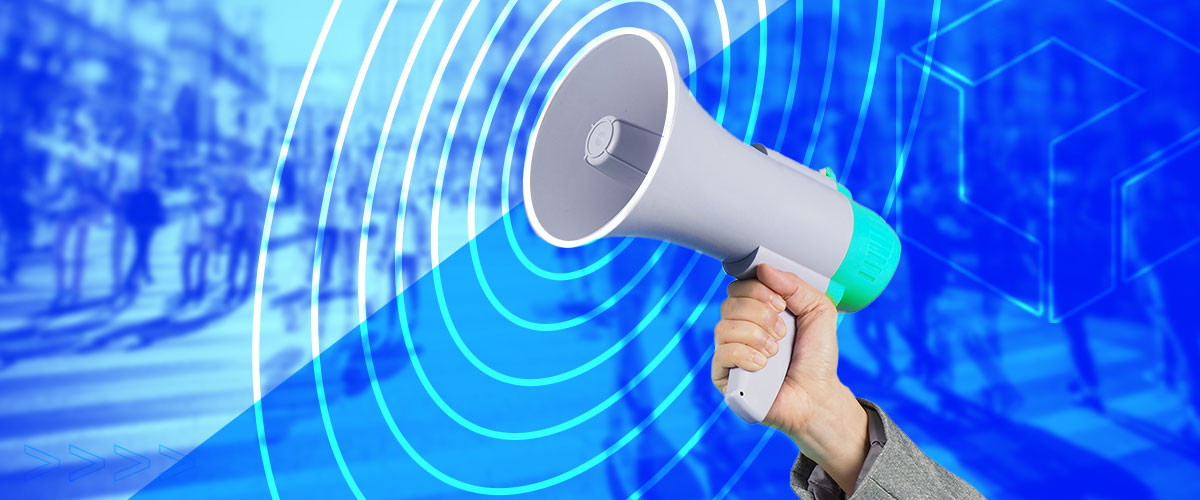Visibility isn’t just about being online. It’s about being seen by the right people at the right time. For local businesses, that means showing up when nearby customers are actively searching for products or services you offer.
That’s where local SEO comes in. It’s the bridge between your business and the community around you, ensuring your brand appears in the searches that matter most.
Whether you’re a restaurant owner looking to fill tables, a contractor aiming to book more jobs, or a boutique hoping to drive foot traffic, mastering local SEO is key to standing out in your area and turning online searches into real-world results.
What Is Local SEO?
Local SEO is a specialized digital marketing strategy designed to increase your business’s visibility in geographically relevant search results. If you operate a physical storefront or serve a specific service area, local SEO helps you get found by nearby customers exactly when they’re searching for what you offer.
The goal of local SEO is to connect businesses with customers in their immediate area precisely when they need a specific product or service. Whether a user is searching for “roofing contractor Chicago” or “coffee shop near me,” effective local SEO ensures relevant businesses rank higher and are easier to find.
Why Is Local SEO Important?

Knowing the basics of local SEO is only part of it, though. You also need to understand why it’s important before getting started. First, it improves visibility for searches with local intent, such as “plumbing services near me.” Businesses leveraging local SEO are more likely to be featured in the coveted “local pack” on Google, which prominently displays top local companies alongside maps.
Additionally, local SEO increases foot traffic and leads. Businesses with accurate location-based optimization are more likely to convert digital impressions into physical visits or targeted inquiries.
Finally, it builds credibility. Accurate and updated listings help establish a trustworthy presence online, adding to customer confidence in making purchasing decisions. This part of it can even help you with online sales and conversions.
How Local SEO Works
Since local SEO aims to target audiences geographically, it must use a combination of strategies and tools to optimize online visibility. Success depends on leveraging specific touchpoints designed to reach geographically relevant users.
Connecting with Local Customers
Local SEO campaigns concentrate on ensuring a target audience within specific areas can effectively engage with your brand, whether they reside in a neighborhood, city, or a larger region. By identifying and prioritizing proximity-based search opportunities, businesses can reach customers who are likely to convert because of their physical vicinity.
Optimizing Online Presence
To effectively rank in local search results, businesses must enhance their online profiles, such as their Google Business Profile (formerly Google My Business), website content, and even their presence on online directories. Comprehensive integration across these platforms builds a cohesive and localized online identity.
Amplifying Search Presence
Local SEO strategy revolves around pushing businesses to the forefront of customer searches in traditional search results and on maps platforms, the “local pack.” Improving a company’s prominence in these locations drives higher engagement among nearby traffic.
Generating Tangible Results
These kinds of optimization efforts lead directly to measurable business benefits, including increased foot traffic, inquiries, and conversions. Whether through better leads or physical visits, businesses experience well-rounded growth when implementing an effective local SEO strategy.
How to Do Local SEO: A Step-by-Step Guide
Implementing local SEO successfully involves planning, research, and ongoing optimization. Each step is designed to strengthen how local customers connect with your business.
Step 1: Conduct Local Keyword Research
Capture more qualified local traffic by targeting the terms your customers in your area use. Identify common terms and phrases potential customers use when searching for your services. For instance, service-based keywords like “electrician Seattle” or proximity keywords like “auto repair near me” perform consistently in local SEO rankings.
- Use keyword research tools like Google Keyword Planner or competitor research tools Semrush, Ahrefs, or Moz to find high-intent, location-specific keywords (e.g., “electrician Seattle” or “plumber near me”).
- Include location-modifiers like cities, towns, and neighborhoods or landmarks to capture hyperlocal searches.
Pro Tip: Check Google’s “People Also Ask” and autocomplete suggestions for additional keyword and topic inspiration.
Step 2: Optimize Your Google Business Profile

Stand out in local searches and drive calls, visits, and leads directly from Google. Your Google Business Profile (GBP) is pivotal to your success in local search. Ensuring full profile completion, including business descriptions, relevant categories, services, hours of operation, and high-quality visuals like images of your storefront or product offerings, boosts your search presence. As an added bonus, business profiles such as GBP can show up in AI-overviews and AI-powered search results.
- Fill in all profile details: business description, categories, hours, services, and high-quality images.
- Keep your Name, Address, and Phone number (NAP) consistent with your website and other listings.
- Encourage reviews and respond to them regularly to boost engagement and visibility.
Troubleshooting Tip: If you’ve already set up your profile but can’t find it, your business might not be showing up on Google Maps for a few reasons. Make sure you address them before moving on.
Step 3: Manage Local Citations
Improve visibility and trust by ensuring your business info is accurate and consistent throughout the web. Local citations refer to mentions of your business’s details, such as Name, Address, and Phone number (NAP) online. These citations validate your operation’s legitimacy and drive authority in your area.
Consistently managing directory listings to ensure accurate and up-to-date NAP data helps sustain positive rankings. From Yelp to regional Chamber of Commerce listings, a consistent presence signals to search engines that your business is legitimate.
- Audit and update listings on sites like Yelp, Angi, and your Chamber of Commerce.
- Inconsistent NAP data can negatively affect rankings, so ensure they are correct and consistent.
Step 4: Boost Engagement Through Online Reviews
Build credibility and attract more customers with strong, positive reviews. Online reviews are crucial for building your business’s reputation and influencing customer decisions. Encouraging happy customers to leave reviews on platforms like Google or Yelp boosts credibility and visibility. Simple ways to request reviews include follow-up emails, in-store signage, or quick reminders during interactions. Make it easy by providing direct links or QR codes to your review pages.
Responding to reviews, both good and bad, is just as important. Thank positive reviewers to show appreciation and build relationships, while addressing negative reviews professionally and constructively to resolve issues and show you care. Engaging with reviews regularly builds trust with customers and demonstrates to other users and search engines that your business is active and customer-focused.
- Ask satisfied customers to leave reviews on Google, Yelp, or industry-specific platforms.
- Respond to both positive and negative reviews to show that you value customer feedback.
Pro Tip: Add a QR code in-store or on business cards linking directly to your Google review page.
Step 5: Improve On-Page SEO for Local Signals

Enhance relevance for local searches and drive higher rankings with optimized content. Local keywords should flow naturally within your website’s structure and content. Page titles, meta descriptions, headers, and alt text all serve as opportunities to incorporate high-performing local search modifiers. Maintaining consistent NAP data in your footer aids visibility and builds a trustworthy foundation for Google’s crawlers.
Optimizing service and location-specific pages is critical when operating across multiple areas. These pages can deliver targeted responses to user queries while bolstering your local content authority. Embedding Google Maps on your website further enhances location targeting, as does implementing local schema markup.
- Add local keywords to page titles, headers, meta descriptions, and alt text.
- Create service- and location-specific pages for each area you target.
- Embed a Google Map on your location pages or contact page.
- Use Local Business Schema and Review Schema for rich snippet eligibility.
Step 6: Build Local Backlinks
Strengthen authority and outperform competitors with links from trusted local sites. High-quality backlinks remain one of the strongest ways to validate your website’s authenticity and relevance to search algorithms. When it comes to local SEO, endorsements from regional blogs, event sponsorships, and collaborations with local influencers help amplify reach. Each authoritative link adds strength to your business’s narrative, driving visibility within targeted geographies.
- Partner with local influencers, sponsor community events, or collaborate with local blogs.
- Earn high-quality backlinks from trusted local sources to strengthen domain authority.
Step 7: Monitor and Refine Your Campaign

Maximize ROI by tracking performance and making data-driven improvements. Measure the performance of your local SEO campaigns using tools like Google Search Console, Google Analytics (GA4), and insights from your Google Business Profile. Reviewing these metrics over time provides insight into consumer engagement and allows refinement for maximum impact.
Remember that local SEO isn’t static. Seasonal demands, shifts in consumer behavior, and changes in market competition dictate the need for ongoing iteration to maintain rankings and business growth.
- Track progress with Google Analytics (GA4), Google Search Console, and your Google Business Profile Insights.
- Adjust strategy based on seasonal trends, search volume shifts, and competitive changes.
Taking the Next Step in Local SEO
Local SEO is not a quick fix. It is an ongoing process that grows and changes with search engines and customer behavior. The businesses that come out on top are the ones that keep refining and improving their presence.
If you want to attract more local customers without wasting time guessing what works, partnering with the right team makes all the difference. At Logical Position, we build data-driven strategies that boost visibility, increase traffic, and help your business thrive.
Ready to grow your business? Partner with Logical Position as your trusted local SEO agency. Let’s turn searches into Sales!





